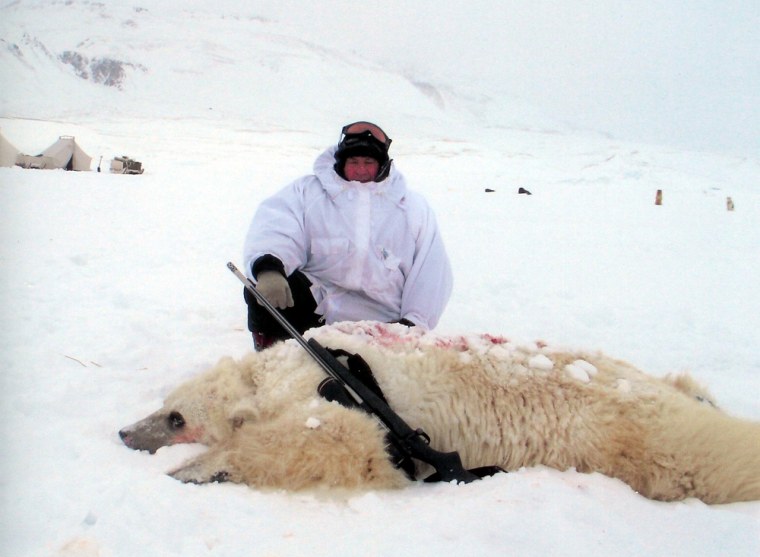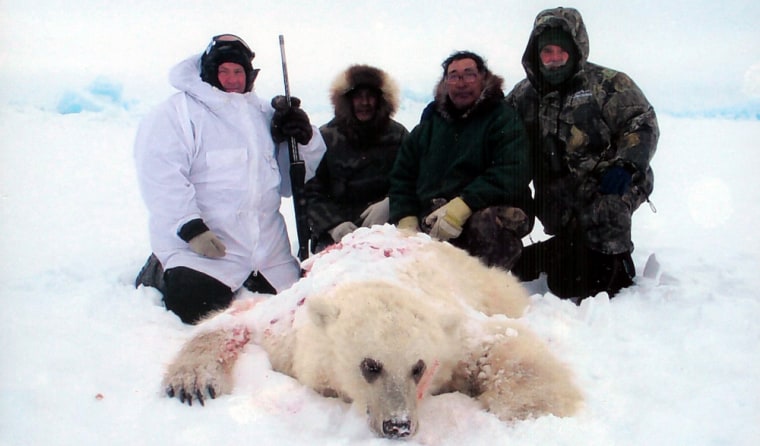Northern hunters, scientists and people with vivid imaginations have discussed the possibility for years.
But Roger Kuptana, a guide from Canada’s Sachs Harbor was the first to suspect it had actually happened when he proposed that a strange-looking bear shot last month by an American sports hunter might be half polar bear, half grizzly.
Officials seized the creature after noticing its white fur was scattered with brown patches and that it had the long claws and humped back of a grizzly. Now a DNA test has confirmed that it is indeed a hybrid — possibly the first documented in the wild.
"We've known it's possible, but actually most of us never thought it would happen," said Ian Stirling, a polar bear biologist with the Canadian Wildlife Service in Edmonton.
Polar bears and grizzlies have been successfully paired in zoos before — Stirling could not speculate why — and their offspring are fertile.
Breeding seasons for the two species overlap, though polar bear gets started slightly earlier.
Polar bear and grizzly territory also overlap in the Western Arctic around the Beaufort Sea, where the occasional grizzly is known to head onto the sea ice looking for food after emerging from hibernation.
Grizzlies hunting seals?
Some grizzly bears make it over the ice all the way to Banks Island and Victoria Island, where they have been spotted and shot before. These bears will scavenge seals left over by polar bears.

"And some hunters have told me that they think sometimes the grizzly bears actually hunt seals, which I'm quite sure they could do," Stirling said.
That might explain how a grizzly got to the region, but few can explain how it managed to get along with a polar bear mate long enough to produce offspring.
Colin Adjun, a wildlife officer in Nunavut, said he's heard stories before about an oddly colored bear cavorting with polar bears. "It was a light chocolate color along with a couple of polar bears," Adjun said.
And though people have talked about the possibility of a mix, "it hasn't happened in our area," he said.
While the latest find is a surprise, it is not necessarily another sign of climate change, said John England, a geologist who was with the team that spotted the earlier grizzly.
"If we want evidence for climate change, we don't have to go to an isolated occurrence of a grizzly bear somewhere," said England, who holds a northern research chair on environmental change in the Arctic.
"The satellite imagery showing sea ice reduction over the last 30 years is proof positive of very dramatic changes in the northern hemisphere."
No fine for hunter
The DNA results were good news for Martell, who had paid $50,000 for guides and a permit to hunt polar bear. Before the tests came back, the 65-year-old hunter was facing the possibility of a $1,000 fine and up to a year in jail for shooting a bear for which he had no permit — as well as the disappointment of an expensive hunting trip with no trophy.
The local natural resources department now plans to return the bear to the hunter.
